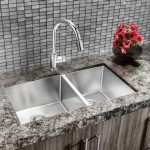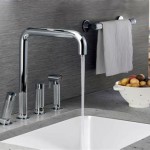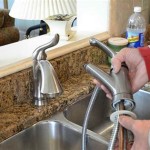If you’ve ever been curious about the mysterious device that stands proud of your kitchen sink, you’re not alone. Many homeowners are puzzled by the kitchen sink air gap and its purpose. This article explores what an air gap is and why it’s important for your kitchen sink.
What is an Air Gap?
An air gap is a device that is installed in a kitchen sink drain to ensure that wastewater from the sink does not backflow into the clean water supply. It works by creating an air chamber between the sink and the drain that prevents dirty water from returning up the pipe and contaminating the clean water. The air gap is designed with a vent that allows air in to break the vacuum created by the water flowing down the drain.
Why Is an Air Gap Necessary?
An air gap is necessary to prevent wastewater from backing up into the clean water supply, which could cause contamination and health hazards. The air gap is also important for preventing cross-contamination between different fixtures, such as a dishwasher and a sink. Without an air gap, wastewater from the dishwasher could be forced up the sink drain and contaminate the clean water.
How Does an Air Gap Work?
An air gap works by creating an air chamber between the sink and the drain that prevents dirty water from returning up the pipe and contaminating the clean water. The air gap is designed with a vent that allows air in to break the vacuum created by the water flowing down the drain. This prevents the water from being forced up the pipe and into the clean water supply.
Do I Need an Air Gap in My Kitchen Sink?
In many areas, an air gap is required by local plumbing codes and must be installed for safety reasons. Even if it’s not required, it’s still a good idea to install one in your kitchen sink to prevent contamination and ensure the safety of your water supply.
What Are the Different Types of Air Gaps?
There are several different types of air gaps available for kitchen sinks. The traditional air gap is a cylindrical device that is installed directly into the sink. An alternative to this is the air break gap, which is a device that is installed on the wall behind the sink. There are also air admittance valves, which allow air to enter the drain without having to be installed in the sink.
How Do I Install an Air Gap?
Installing an air gap is a relatively straightforward process that most homeowners can do themselves. Start by turning off the water to the sink, then disconnect the plumbing lines to the sink. Next, install the air gap according to the manufacturer’s instructions. Finally, reconnect the plumbing lines and turn the water back on.














Related Posts








